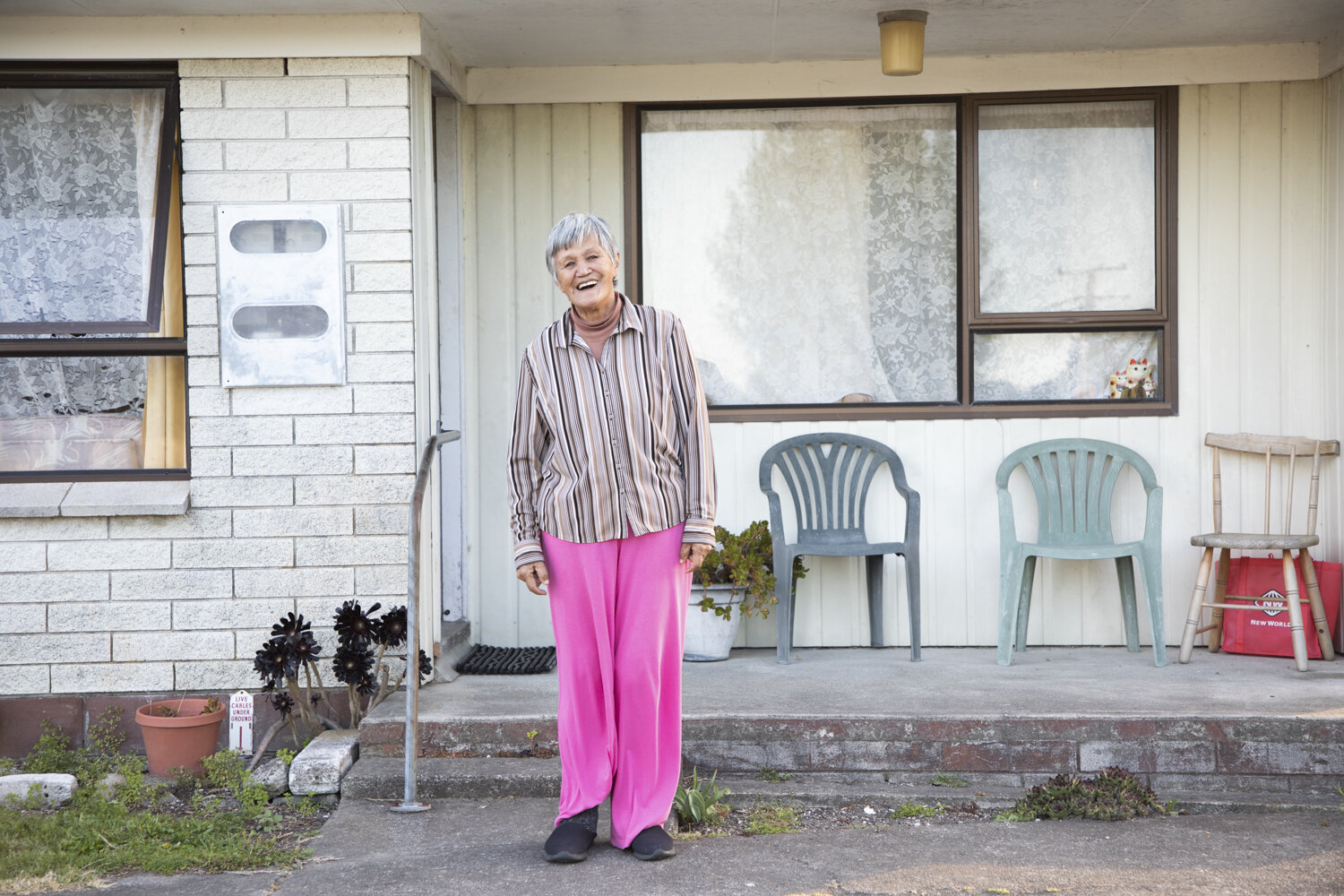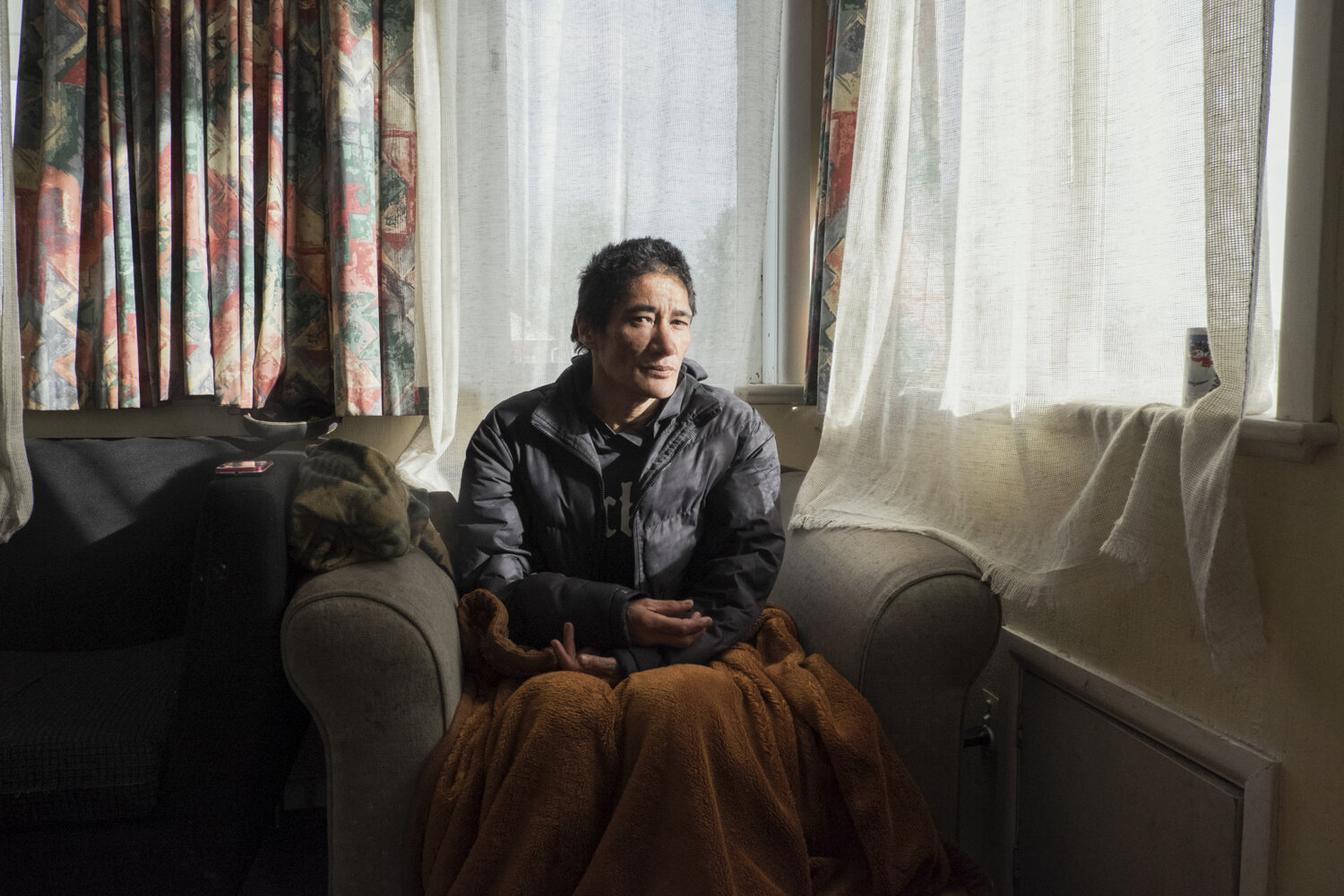Sara (Hera) Orme - Featured Portfolio
What happened to the maunga?
Featured Portfolio by Sara (Hera) Orme
February 2021
Essay by Matariki Williams for PhotoForum
Sara Orme, Wairetu, Ruaihona, Te Teko, 2014
Te Teko is a small town nestled beside the Rangitāiki river, Pūtauaki’s looming presence behind, it sits on the bends and elbows of a State Highway that delivers you to Rotorua, Whakatāne or any of the many smaller towns in-between. It is known by locals, and ex-locals, and anyone who whakapapas to there or around there, as Texas. Growing up in the Bay of Plenty, as I did, you develop an innate familiarity with the smaller towns that constitute the region: it is where you travel for sports tournaments, tangi, hura kōhatu, birthdays, parties, and the events that make up the calendar of a Māori whānau. Though I never lived in Texas, and don’t whakapapa there, I’ve attended weddings and rugby matches in Texas but my main interaction with it is that I drive through it.
Hera Orme’s (Ngāti Awa, Te Arawa) photos don’t allow a drive-through experience of Texas. They compel the viewer to stop, to look. When I did this, what I saw was beyond the fleeting view I generally experience through the frame of a car window. An example of this is the photograph, which I admit is one of my favourites, Pūtauaki looming (2014), of a clothesline in the evening light. It is strung along the long side of a house, and Pūtauaki is visible in the background. The colours are rich and varied, and reflect my assertion that the shades of Aotearoa are much more complex than the ‘clean and green’ of a Tourism New Zealand ad. Aotearoa is a veritable palette of the deep browns and reds of our whenua, and seeing these hues in the shadow of Pūtauaki, bring me to one of the recurring themes I see in Hera’s work, which is of the whenua itself.
During our times talking with each other, Hera would often mention the devastating raupatu inflicted upon Ngāti Awa, the iwi mana whenua of Te Teko. This raupatu came in the wake of two deaths that the iwi were implicated in, that of Reverend Carl Volkner and James Fulloon, who was also of Ngāti Awa but acting on behalf of the Crown. The reaction from the Crown was exerted with such brutality that the iwi became known as tāngata hara, sinful people, a term bestowed upon them by the Crown. Land was confiscated to the amount of 245,000 acres, including urupā, wāhi tapu and the Rangitāiki swamp which was subsequently drained. Such was the ensuing stigma of being called tāngata hara, it influenced how Ngāti Awa saw themselves and how other iwi saw them. The impact of this term lasted generations, as the iwi Chief Negotiator in the Treaty settlement process, Tā Hirini Moko Mead, acknowledged it also led to a loss of language, cultural practice and had severe ramifications for their specific Ngāti Awa identity.
Hearing this kōrero from Hera, she talks also of her father, the late Arapeta Tautuku Orme. Born in Te Teko, he spent most of his life living outside of it, and yet always strove to do his iwi, people, and home justice. It is a message and plight that continues down the generations as Hera passes this kōrero on through her photographs. In Hera’s work I see the enduring presence of whenua, and its connection to identity, strength and humanity. I find myself wondering what has happened to the maunga that appears in many of her images’ backgrounds, Pūtauaki who was renamed Mount Edgecumbe by Lieutenant James Cook in 1769, erasing the name of a tipuna maunga whose own stories are so embedded in the surrounding landscape. In the Ngāti Awa Raupatu Report, prepared by Eddie Durie (Rangitāne, Ngāti Kauwhata, Ngāti Raukawa) for the Waitangi Tribunal, Durie illustrates how the raupatu of Ngāti Awa whenua unlawfully also included part of Pūtauaki:
“…it was impossible to have lawfully confiscated the rugged hill country that could not have been settled at the time. In addition, it was not possible to have confiscated that part of Mount Pūtauaki that lay within the confiscation boundary, the whole of the Rangitāiki Swamp (now the greater part of the Rangitāiki Plains), and the sacred sites of Ngāti Awa. These were clearly unsuited to military settlements at the time.”
Through all of this, I am reminded that the land remains and so do the people.
As Hera and I talked, many hononga revealed themselves between her and I: we share the iwi whakapapa of Te Arawa, and we both have connections to Te Teko. On the surface, these can seem like rather minor connections, but whakapapa has a way of revealing more and more, and over time the hononga between us have increased and deepened. Indeed, it is these hononga that provided me with so much insight into the images and the stories behind the people therein. As a piece of writing, I understand that the assumption would be that I pass this kōrero on, however that doesn’t feel right. Spending time with her images and hearing Hera’s kōrero is what gave that insight and it feels inadequate to pass that on. Instead, my takeaway would be to urge viewers to seek these kōrero out themselves, to consider anew the way in which we view the small towns of Aotearoa.
There is an insularity to Hera’s images, though I’m not struck by a feeling of exclusion. Rather I feel like I’m invited in, as Hera has been, to the homes and onto the marae. This is a strength of Hera’s and what distinguishes her as a photographer from within: these are not ethnographic portraits taken from an outsider’s perspective, but rather a heartfelt paean to her wā kāinga.
The final photograph in this series, which follows an urupā scene with empty chairs at the side of a grave, is of two of Hera’s recurring protagonists walking along a gravel driveway. Toward the Rangitāiki (2014), features the two with their backs to the camera, conveying a sense of resolve after having shared so much of themselves in the preceding images. It is as if the two had given enough to the hungry gaze and were walking away from it. The river awaits, a horse awaits. They don’t need us to view them for them to be made real.
Matariki Williams (Ngāi Tūhoe, Ngāti Hauiti, Taranaki, Ngāti Whakaue) is Acting Senior Curator Mātauranga Māori at Te Papa. She is the co-author of Protest Tautohetohe: Objects of Resistance, Persistence and Defiance, and the co-editor of ATE Journal of Māori Art. Her writing has featured in multiple publications including frieze, Art in America, e-Tangata, Pantograph Punch, The Spinoff, PhotoForum, and ArtZone. She is a Trustee of Contemporary HUM.
Hera (Sara) Tautuku Orme (Ngati Whakaue, Ngati Uenukukopako, Ngati Awa)
Ko Putauki toku maunga
Ko Rangitaiki toku awa
Ko Mataatua toku waka
Ko Ngati Awa toku iwi
Ko Tamaoki te hapu
Ko Ruaihona toku marae
No TeTeko ahau
kei Auckland toku kainga inaianei
Ko Tautuku whanau
Ko Arapeta Orme toku matua
Ko Hera/Sara toku ingoa
Te Teko (2008- ) is a very personal project. It’s been in the making for a long time and is still a work in progress. My photographic exploration of the township and its people began soon before the passing of my father, Arapeta Tautuku Orme of Ngati Awa and Te Arawa as we drove the familiar road between Rotorua, where he was living at the time, to Te Teko catching up with whanau and (his) old time school friends. I have been coming to Te Teko since I was a kid and Te Teko project explores the small, predominantly Maori populated, community in New Zealand of which my Father, my Grandmother and my Great Grandmother were born.
Although I never got to document my father’s life here I continue to document his spirit, through whanau who live here today, soaking up both the past and the present of a place he was deeply connected to.
Te Teko is just one small story of colonisation in New Zealand. I hope this project will continue to open up the conversation regarding colonial land theft of the past and an understating of the inequalities of the present.
I graduated from Canterbury university in 1988 with a double degree in Art History and Sociology, majoring in both ethnicity and feminist studies. I later studied photography at Unitec, Auckland graduating in 1993.
I tap into my sociologist sensibility when I document the life and human experience around me as a photographer.
Today, when I arrive in Te Teko I am only called Hera. I am also endearingly known as ‘the blonde’. I am welcomed as whanau and we are united through our shared lineage.
I search for truth in my work as a photographer. I avoid showing Te Teko romantically like many non-indigenous people before me have done. There’s both tenderness and grit in my images. I try to reflect/record the positive and the negative aspects of the place… As it is. As I find it. I am conscious of not perpetuating a ‘status quo’ of how Maori are viewed and aim to create a way of seeing in all its complexity as well as celebrating resilience, survival and joy in what has been kept.
I don’t always have my camera, it’s not always appropriate, but the narrative is never missed. Learning from my memories and experiences, connecting with whanau and asking more questions about the realities and consequences of colonial theft over one hundred and fifty years ago has become the essence of the Te Teko project.
There is so much mixed emotion for me personally and also as a photographer. Like all places no one story is the same and everyone has their own experience. However, it is hard to ignore the lingering impact and consequences of The Raupatu that are still visible and felt today, generations later. In 2021, for those who might drive through Te Teko and surrounding areas or read our national media, one might feel a sense of despair of visible poverty that prevails. I can’t look at it as either romantic, neither do I see only the impoverishment. It is just simply a different way of life and knowing that no life is ‘normal’. There is richness and love amidst the struggle and hardship.
Further links:
Te Teko selected images here
Growing up blonde & Maori here (A personal experience from Sara Orme)
Website here (saraorme.com)
Published with the support of Creative New Zealand
























